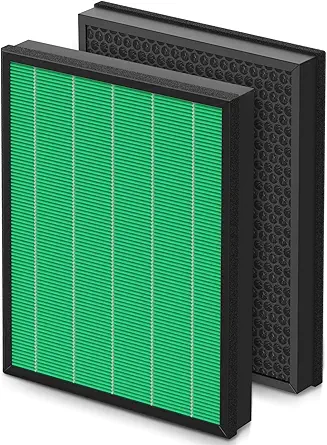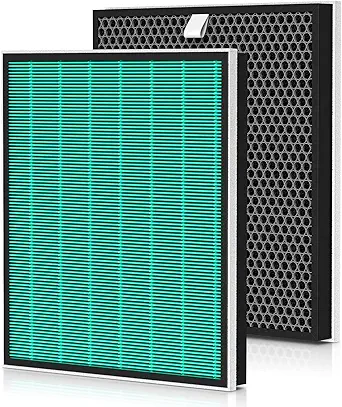Understanding the Power of Advanced Air Filtration Technology
Indoor air quality has become a critical concern for homeowners and businesses alike, with increasing awareness about airborne pollutants and their impact on health. At the forefront of air purification technology stands the activated carbon air filter, a revolutionary solution that transforms the way we breathe indoors. This sophisticated filtration system employs highly porous carbon material to trap and eliminate a wide range of airborne contaminants, providing cleaner, fresher air for occupants.
The remarkable effectiveness of activated carbon air filter systems lies in their unique molecular structure and adsorption capabilities. Unlike basic mechanical filters that only capture larger particles, activated carbon works at a microscopic level, attracting and binding harmful substances through a process known as adsorption. This makes it particularly effective at removing odors, gases, and volatile organic compounds (VOCs) that other filtration methods might miss.
The Science Behind Activated Carbon Filtration
Chemical Structure and Activation Process
The journey of creating an activated carbon air filter begins with raw carbon materials, typically sourced from coconut shells, wood, or coal. These materials undergo a careful activation process involving high temperatures and controlled oxidation, which creates millions of microscopic pores across the carbon's surface. This extensive network of pores dramatically increases the surface area available for adsorption, with just one gram of activated carbon potentially containing a surface area equivalent to several football fields.
During the activation process, the carbon develops a complex internal structure that becomes highly attractive to various chemical compounds and pollutants. This enhanced surface area and chemical reactivity make activated carbon air filter systems exceptionally efficient at capturing and removing unwanted substances from the air.
Adsorption Mechanisms and Efficiency
The primary mechanism by which an activated carbon air filter purifies air is through adsorption, not to be confused with absorption. In adsorption, pollutant molecules adhere to the surface of the carbon material, forming a thin film. This process is particularly effective for capturing organic compounds, chemicals, and odor-causing molecules.
The efficiency of the adsorption process depends on several factors, including the pore size distribution, surface chemistry, and contact time between the air and filter media. Modern activated carbon air filter designs optimize these parameters to achieve maximum pollutant removal while maintaining proper airflow.

Types of Pollutants Removed by Activated Carbon
Gaseous Pollutants and VOCs
One of the most significant advantages of an activated carbon air filter is its exceptional ability to capture gaseous pollutants and volatile organic compounds. These include common household chemicals like formaldehyde from furniture, benzene from cleaning products, and various other harmful gases that can accumulate in indoor spaces.
The filter effectively removes cooking odors, pet smells, and chemical fumes from paints and solvents. This comprehensive removal of gaseous pollutants helps create a healthier indoor environment, particularly beneficial for individuals with chemical sensitivities or respiratory issues.
Odor-Causing Molecules and Chemical Compounds
Unpleasant odors can significantly impact indoor comfort and well-being. The activated carbon air filter excels at trapping and neutralizing various odor-causing molecules, from everyday household smells to more persistent chemical odors. The filter's molecular structure allows it to capture these compounds effectively, preventing them from recirculating in the air.
The removal of these odorous compounds isn't just about improving smell - it often corresponds to the elimination of potentially harmful substances that could affect respiratory health and overall wellness.
Implementation and Maintenance Best Practices
Optimal Placement and Installation
The effectiveness of an activated carbon air filter largely depends on proper placement and installation. Strategic positioning ensures maximum air circulation and pollutant capture. Ideal locations include areas near potential contaminant sources, such as kitchens, bathrooms, or rooms with new furniture that might off-gas VOCs.
Professional installation can optimize the filter's performance by ensuring proper airflow patterns and preventing bypass issues where unfiltered air might slip around the filter media. This attention to installation details maximizes the filter's efficiency and longevity.
Maintenance Schedule and Replacement Guidelines
Regular maintenance is crucial for maintaining the effectiveness of an activated carbon air filter. The adsorption capacity of the carbon material gradually decreases as it captures more pollutants, requiring periodic replacement to maintain optimal performance. Typically, filters should be replaced every 3-6 months, depending on usage patterns and indoor air quality conditions.
Monitoring filter performance and maintaining a regular replacement schedule ensures continuous protection against airborne pollutants. Signs that indicate the need for replacement include decreased odor removal efficiency and reduced overall air quality improvement.
Health Benefits and Environmental Impact
Respiratory Health Improvements
The installation of an activated carbon air filter can lead to significant improvements in respiratory health. By removing airborne irritants and harmful chemicals, these filters help reduce the risk of respiratory issues, allergies, and other health concerns associated with poor indoor air quality.
Users often report reduced symptoms of asthma, fewer allergic reactions, and better overall breathing comfort after installing activated carbon filtration systems. This is particularly beneficial for sensitive individuals, children, and the elderly.
Environmental Sustainability Considerations
While activated carbon air filters provide excellent air purification, they also contribute to environmental sustainability. The carbon material is often derived from renewable sources, and spent filters can be regenerated or properly disposed of with minimal environmental impact. Additionally, improved indoor air quality reduces the need for chemical air fresheners and other potentially harmful products.
The long-term environmental benefits extend to reduced energy consumption, as clean air systems operate more efficiently when properly filtered, leading to lower overall energy usage and carbon footprint.
Frequently Asked Questions
How long does an activated carbon air filter typically last?
An activated carbon air filter typically lasts between 3-6 months under normal usage conditions. However, this can vary depending on factors such as indoor air quality, usage patterns, and environmental conditions. Regular monitoring of filter performance and air quality can help determine the optimal replacement schedule for your specific situation.
Can activated carbon filters remove all types of air pollutants?
While activated carbon air filters excel at removing gases, odors, and VOCs, they work best as part of a comprehensive air filtration system. They may not be as effective at capturing larger particles like dust or pollen, which is why many air purification systems combine activated carbon with HEPA filters for complete air cleaning.
What makes activated carbon filters different from standard air filters?
Activated carbon air filters distinguish themselves through their unique adsorption properties and ability to capture molecular-level pollutants. Unlike standard mechanical filters that only trap larger particles, activated carbon can remove gases, chemicals, and odors through chemical adsorption. This makes them particularly effective for improving overall indoor air quality and creating a healthier living environment.

